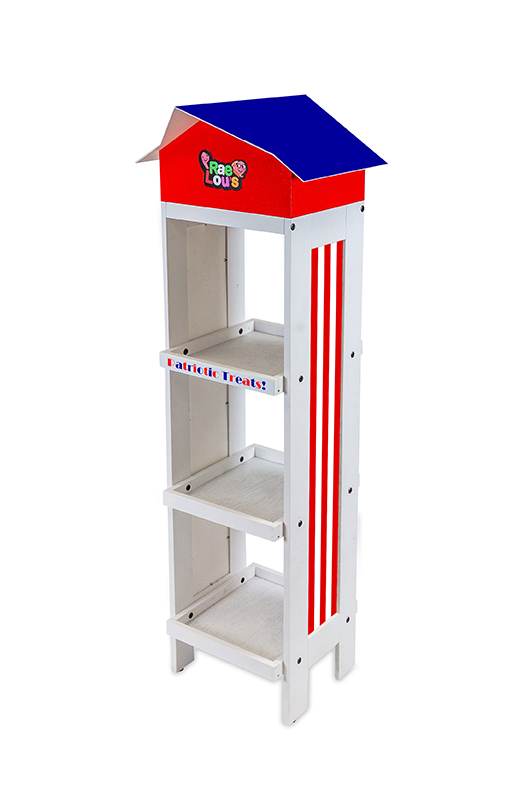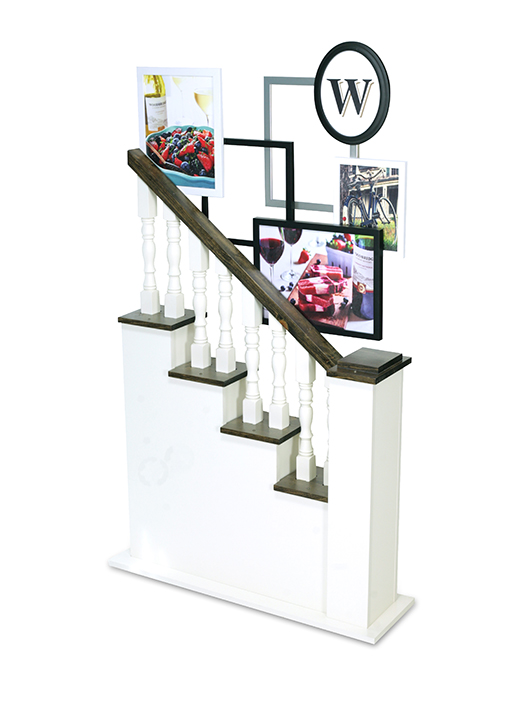As high school graduation approaches, seniors across America turn their focus from academics and college admissions to coming up with a memorable senior prank that will create an enduring legacy for their class. Led by the class’s most creative mischief makers, the goal of these senior pranks is to create as much chaos as possible without jeopardizing graduation rights. One example of a successful senior prank was cooked up by a few enterprising seniors who let 3 pigs loose in their high school. They labeled the pigs 1, 2, and 4. It was a clever way to create a full day of disruption.
As with any good senior prank, an effective retail POP display generates sales by creating some level of disruption that gets the attention of shoppers or creates an opportunity for shopper engagement. In today’s post, we’ll discuss 5 ways to be purposeful about creating disruption within interesting retail displays.
- Rotating Graphics– Unfortunately, many displays lose their effectiveness over time. The reason is that shoppers frequently shop the same stores. Over time they become desensitized to most things in the store that are not new. One way to counteract this natural shopper behavior is to refresh the graphics on your display. To the extent you can do that for promotions or on a seasonal basis, you have a greater likelihood of getting noticed by shoppers. Changing the graphics on a display is significantly cheaper than having to replace an entire display. Below is an example of a seasonal program we designed for one of our customers.
- Interactivity– A second approach to creating disruption is to intentionally build interactivity into your retail display. Inviting shoppers to interact with your product creates an opportunity to change a shopper’s pattern of behavior and make an investment in learning about your product. There are lots of good examples of interactive displays. The Martin Guitar display shown below is a fun example of a display that lets guitar enthusiasts play a guitar along with various music tracks.
A second example is the Modarri display shown below which features a live racetrack so kids can test drive toy cars.
- Visual Disruption– There are several ways to create visual disruption such as using bright colors that stand out in a retail environment, using lighting in situations where surrounding displays are not lighted, and using eye catching graphics. A few examples of these unique merchandising ideas are shown below.
- Physical Disruption– Physical disruption can be achieved by separating your products from competitive products that are on either side of your products inline. This can be achieved by using sectional header signs, dividing blade signs, aisle interrupters, or other separation techniques. Alternatively, you can create physical disruption by placing a freestanding display in a location that is away from the normal location where a shopper might look to find products in a particular product category.
For example, Buddy Fruits achieved success by getting the dump bins we made below placed in the produce section in grocery stores which was away from the competitive inline environment where they were originally placed.
- Element of Surprise– A great way to create disruption is to create an element of surprise. For example, we made this staircase to showcase Woodbridge wine. Not only did it fit with the brand, but it created an element of surprise since shoppers don’t expect to see a staircase in the middle of a grocery store.
Similarly, the colored horse shown below was placed outside a local grocery store. It was disruptive and easy to notice since it is unusual to see a horse outside a grocery store, particularly one decked out in crazy bright colors.
Before embarking on your next interesting retail display project, get in touch with your inner mischievous self and be intentional about creating retail disruption.
Jim Hollen is the owner and President of RICH LTD. (www.richltd.com), a 35+ year-old California-based point-of-purchase display, retail store fixture, and merchandising solutions firm which has been named among the Top 50 U.S. POP display companies for 9 consecutive years. A former management consultant with McKinsey & Co. and graduate of Stanford Business School, Jim Hollen has served more than 3000 brands and retailers over more than 20 years and has authored nearly 500 blogs and e-Books on a wide range of topics related to POP displays, store fixtures, and retail merchandising.
Jim has been to China more than 50 times and has worked directly with more than 30 factories in Asia across a broad range of material categories, including metal, wood, acrylic, injection molded and vacuum formed plastic, corrugated, glass, LED lighting, digital media player, and more. Jim Hollen also oversees RICH LTD.’s domestic manufacturing operation and has experience manufacturing, sourcing, and importing from numerous Asian countries as well as Vietnam and Mexico.
His experience working with brands and retailers spans more than 25 industries such as food and beverage, apparel, consumer electronics, cosmetics/beauty, sporting goods, automotive, pet, gifts and souvenirs, toys, wine and spirits, home improvement, jewelry, eyewear, footwear, consumer products, mass market retail, specialty retail, convenience stores, and numerous other product/retailer categories.














